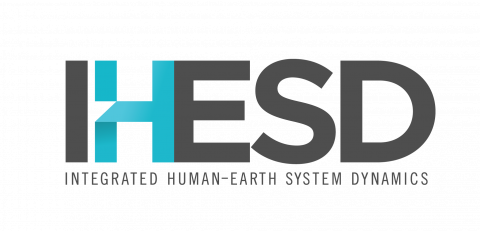Category
Description
These GCAM v4.3 SSP-RCP-GCM Output Databases are made available under the Open Data Commons Attribution License: http://opendatacommons.org/licenses/by/1.0/.
GCAM v4.3 SSP-RCP-GCM plausible solution databases.
Supplemental dataset to: Graham N.T., M.I. Hejazi, M. Chen, E. Davies, J.A. Edmonds, S.H. Kim, and S. Turner, et al. 2020. "Humans drive future water scarcity changes across all Shared Socioeconomic Pathways." Environmental Research Letters 15, no. 1:Article No. 014007. PNNL-SA-151297. doi:10.1088/1748-9326/ab639b
This analysis makes deterministic classifications of how, when water resources are limited and constrained, the human and climate systems interact. The relative effects of both systems on water scarcity are quantified at global and basin scales across 15 global futures that include five different socioeconomic conditions (the Shared Socioeconomic Pathways, SSPs) and four different climatic conditions (the Representative Concentration Pathways, RCPs). These 15 scenarios are used to first analyze a 'Human Alone' component by isolating the human impact on future scarcity. This is accomplished by holding all climate variables to their 2005 levels while altering socioeconomic growth and technological change. General circulation model (GCM) derived climate impacts for five models are applied to establish 75 'Human and Climate' scenarios which allows for the quantification of climate impacts. Climatic impacts to water supply, agricultural productivity and change, hydropower availability, and building energy demands are applied from 5 different bias-corrected GCMs to make a suite of 75 climate runs. By subtracting the human derived impacts from the 'Human Alone' scenarios, from the 'Human and Climate' scenarios the climate impact is isolated. First, the drivers of future water scarcity are evaluated by isolating the impacts that both humans and climate have while accounting for feedbacks between humans, energy, and land. Secondly, the simultaneous impacts that human and climate systems have on water scarcity are analyzed by determining whether each system is increasing or decreasing scarcity in all global water basins.
We describe the GCAM model, the scenario components, climate derived impacts, and the calculations of scarcity changes and attribution. This study uses the global change assessment model (GCAM), with inclusions of water constraints to both renewable and nonrenewable sources of water, to investigate the relative contributions of climate and human systems on water scarcity regionally and globally under a wide range of scenarios. GCAM links socioeconomics, the energy system, land-use change, climate, and the water sector. GCAM is a market-equilibrium model that allows for prices to be adjusted within each time step to ensure that the supply and demand of goods and services remains equilibrated at each time step allowing for simultaneous market clearing across sectors. This study accounts for a limited supply of water by employing cost resource curves across all 235 basins that follow a logit formulation to determine the share of each water source (renewable surface water, nonrenewable groundwater, and desalinated water) needed to meet the water demands within all basins. As depletion of various water sources increases the extraction price increases, which leads to compounding price increases on the goods and services that require higher-priced water sources.
Rights and permissions
Open Access This article is licensed under a Creative Commons Attribution 4.0 International License, which permits use, sharing, adaptation, distribution and reproduction in any medium or format, as long as you give appropriate credit to the original author(s) and the source, provide a link to the Creative Commons license, and indicate if changes were made. The images or other third party material in this article are included in the article’s Creative Commons license, unless indicated otherwise in a credit line to the material. If material is not included in the article’s Creative Commons license and your intended use is not permitted by statutory regulation or exceeds the permitted use, you will need to obtain permission directly from the copyright holder. To view a copy of this license, visit http://creativecommons.org/licenses/by/4.0/.
The Creative Commons Public Domain Dedication waiver http://creativecommons.org/publicdomain/zero/1.0/ applies to the metadata files associated with this article
Please use this Globus Link to select individual files

